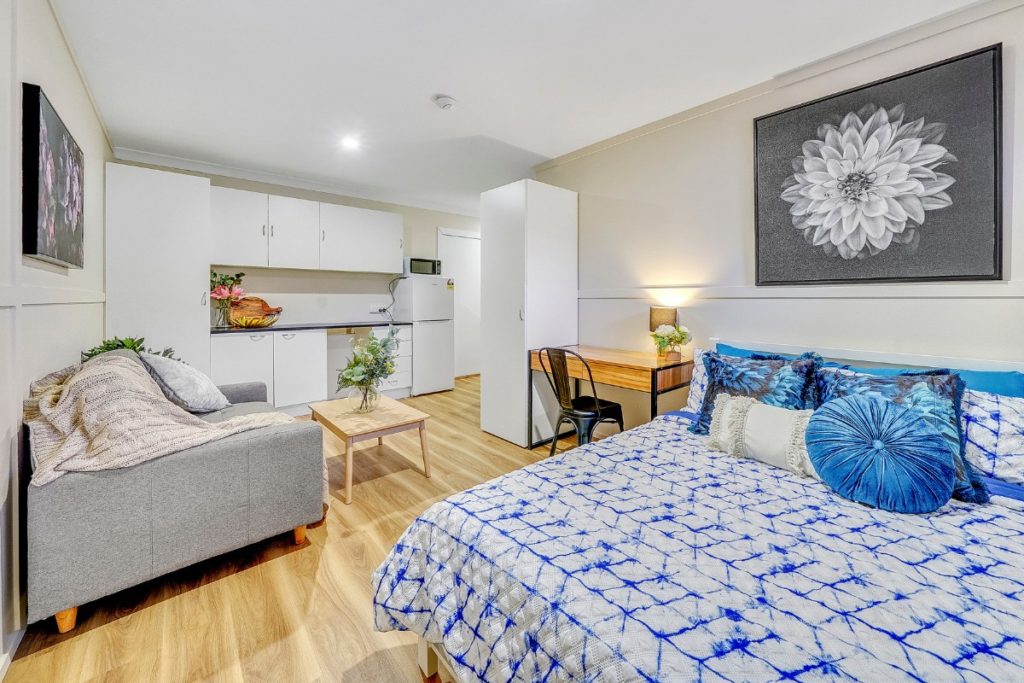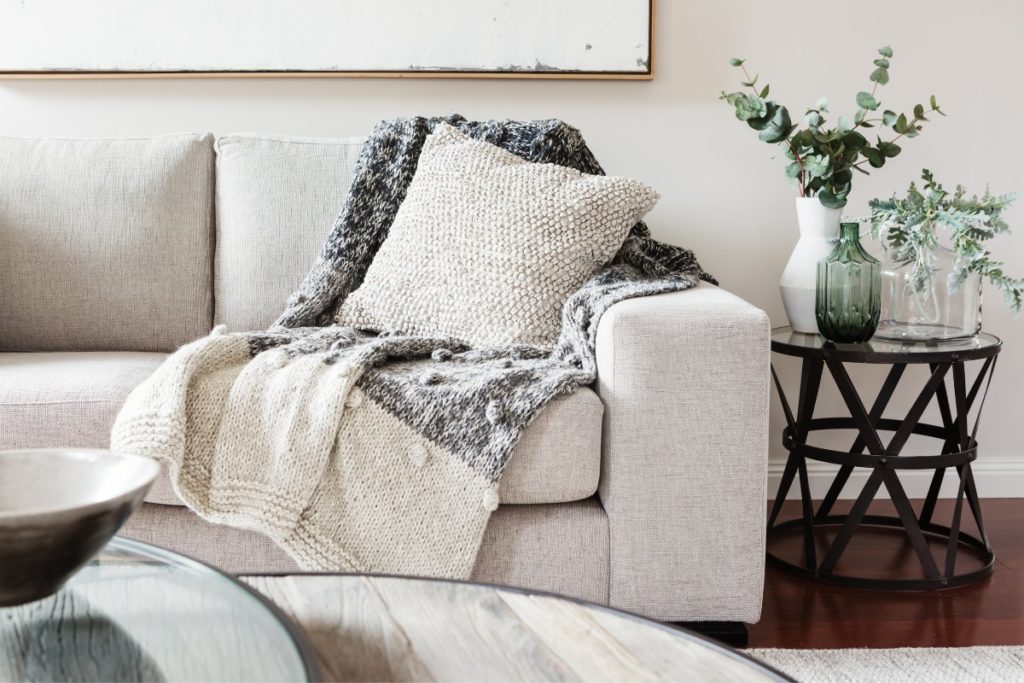8 Unbreakable design rules of living large in a small space!
As seen in, Rani Engineer’s design blog; La Maison Jolie, September 9, 2021.
When designing the layout of a small space there are a few rules a property owner must follow to ensure the space is not just loveable, but liveable, according to a recognised housing affordability expert.

Position the bed first
When planning the layout of a micro-apartment or small space, Ugarte said his first decision was always where the bed should sit, since that one decision would dictate where most of the other furniture was likely to go – including the television (which he maintained should always sit opposite the bed).
According to Ugarte, find the best position in the space that will accommodate a queen-sized bed, since it’s longer than a double bed and allows for someone who’s tall to fully stretch out.

Place the remaining furniture relative to the bed
After selecting the best position for the bed, Ugarte said he then scans the remainder of the space to determine the best placement for the rest of the furniture, including where on the wall to affix the television (at least a 32 inch), so it is able to swivel to allow viewing from the bed, sofa and kitchenette.
Once you’ve positioned the bed, you can gauge the size and position of everything else, in particular the two-seater sofa and the dining/kitchen table with two or more dining chairs.
We’ve found that when creating a co-living environment, proximity to the main kitchen is far less important than the location of a tenant’s own kitchenette. That’s why, wherever possible, we carve out a separate room for a kitchenette to create the feeling of a fully fitted out one-bedroom apartment.
It’s also important in this planning stage to earmark the best positions for power points and TV and USB outlets to service the electrical and technological needs of the space.

Always consider how noise travels
To avoid likely noise complaints, Ugarte stressed that property owners should never install a television on an inter-joining wall, regardless of the degree of insulation or sound proofing.
According to Ugarte, foreseeing potential issues around noise so you can avoid them entirely, or implementing potential fixes in advance, will help minimise headaches for both the tenants and you.
Always ask one question before opening your wallet.
While a natural inclination to aim for superior fixtures and finishes, Ugarte insisted clients exercised restraint by asking a single question before paying out any extra cash.
Before outlaying anything more than originally budgeted for, we ask our clients if the additional expense will result in additional rent.
More often than not, their response is ‘no’, so we encourage them to settle for mid-range fixtures and fittings that heighten the comfort factor for tenants, to minimise emotive decisions that are likely to leave them out of pocket.
Want to see more co-living investment properties? Check out our student success stories HERE.

Use a neutral colour palette
Ugarte always recommends using a safe neutral or black-and-white colour palette for a rental, to avoid alienating tenants who might have otherwise wanted to live there.
It’s naïve to believe that using a, perhaps, on-trend, but strong colourway to decorate a space won’t put off some potential tenants.
According to Ugarte that also goes for considerations around colour options for splashbacks and benchtops too, where we tend to select an easy-to-clean laminate benchtop in a neutral colourway and install simple white cabinetry to create an even greater illusion of space.

Pick comfort over style
When it comes to the key driver behind decisions around design and fixtures and fittings, Ugarte believes the only consideration that matters is the degree of comfort the space will afford the tenant. The biggest mistake investors make when going it alone comes from trying to make the space luxurious, when the most important consideration for a prospective tenant is how clean the property is, and how comfortable they will be living there.

Bathroom size doesn’t matter
In terms of size, Ugarte maintains that the size of the bathroom is probably the least important factor when designing for a small space.
Prior experience shows that tenants have been equally happy with a bathroom that’s just 800mm x 1800mm (without a basin) as a bathroom that’s 2400 x 900mm and complete with a vanity, toilet and shower.
Of course, while the latter will always be our preference, installing a smaller bathroom might be the right decision for owners working with a smaller space.
Want more? See my Bathroom Renovation guide HERE.

If you’re going to splurge on something, splurge on access
While Ugarte’s team can only work with the policies that apply to the State they are working in, he maintains that the one thing he advises clients to include wherever possible, even if it costs a little more, is external access from their micro-apartment.
We always advise our clients to pay the extra cost of installing a sliding door, as it’s generally money well spent.
So, instead of adding a window on a ground floor micro-apartment, we urge our clients to put in a sliding door to give tenants access to their own small courtyard, or even the bigger yard, since this bonus feature is always in high demand.
Want to learn more about how you can invest in high yield co-living properties? INVIDA creates custom co-living properties for investors that want positive cash flow returns. Click HERE for more.





